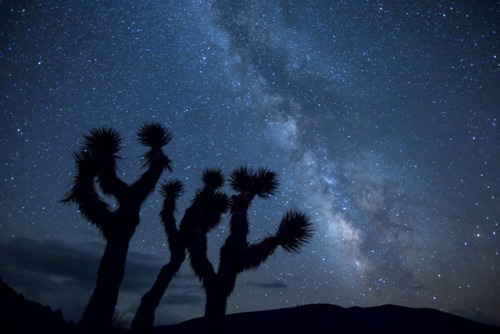mypubliclands: Starry skies Next week is the longest night of the year. As we gear up for the 2018 W
mypubliclands: Starry skies Next week is the longest night of the year. As we gear up for the 2018 Winter Solstice, we’re enjoying starry skies as seen from your public lands. The BLM manages one in every 10 acres of land in the United States, including some of the most rugged areas for those seeking solitude. On BLM-managed land, you’ll find some great spots away from light pollution and the crowds of the more popular parks. Here are some tips and tricks to help you capture incredible night sky photos on your public lands from BLMer Kyle Sullivan, Mojave Trails National Monument Manager. Step 1: Learn about night sky shooting: My favorite resource for photographing the night sky is lonelyspeck.com. This website provides tutorials on how to shoot and post-process night sky photos, and includes a comprehensive gear guide that focuses on night sky photography. They even have reviews for shooting the Milky Way on cell phones! This website helped me go from no experience to pro in one night sky shooting session. Step 2: Gear and equipment: I’m currently shooting with a Nikon D750 with a Rokinon 24mm f/1.4 lens. I’ve also shot with a Canon 60D. The lower the f rating, the more light is let in. Wide angle lenses help capture the foreground and the night sky. You’ll also want a sturdy tripod for long exposure photos. One way you can make your tripod more stable is to hang a heavy bag off the hook to help anchor it. I sometimes use a re-useable shopping bag filled with rocks for this purpose. Step 3: Figure out where to go: One of the best resources for finding dark skies is the light pollution map at darksitefinder.com/map. This map helps you find the darkest places to see the most stars. It also has some recommendations for specific places. Local topography can also help shield you from light pollution. For example, look for low spots or canyons to help block out light pollution from nearby communities. Step 4: Figure out when to go: The moon phases have a huge impact on the number of stars you can see. A full moon will light up the landscape like its daytime and hide most of the stars. A new moon creates the darkest skies, but you’re the foreground will likely just be a silhouette. The new moon is ideal for first time night sky shooters because it allows you to focus on capturing the stars and makes post processing easier. For more challenge, shoot when the moon is within ¼ of a new moon, which will light up some of the foreground while still preserving most of the stars. Celestial events, like meteor showers, can add a unique element to your photos. Step 4: Figure out when to go: The moon phases have a huge impact on the number of stars you can see. A full moon will light up the landscape like its daytime and hide most of the stars. A new moon creates the darkest skies, but you’re the foreground will likely just be a silhouette. The new moon is ideal for first time night sky shooters because it allows you to focus on capturing the stars and makes post processing easier. For more challenge, shoot when the moon is within ¼ of a new moon, which will light up some of the foreground while still preserving most of the stars. Celestial events, like meteor showers, can add a unique element to your photos. Step 6: Share the love! Not everyone knows how amazing the night sky is! It takes the human eye about 30 minutes to fully acclimate to the dark. This means that flashlights, lanterns, camp fires, car lights, etc, can impact the amount of stars you see. Your home may also be contributing to light pollution. Visit darksky.org/lighting to learn about how your outdoor lighting might be impacting dark skies and what you can do to preserve this endangered resource. -- source link


